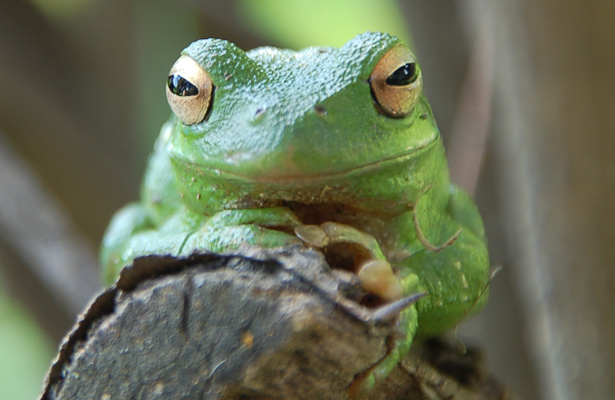Jeremiah Was A Bullfrog…I Think

Can you identify a frog based solely on what it sounds like? I can’t. And apparently, I’m not alone. New research published in this month’s Ecology shows that even trained observers (or whatever you call listeners) can make mistakes when it comes to identifying frog species and estimating their numbers. That could be a big deal, since it means that the largest frog population survey in the United States may be overestimating the number of frogs out there.
Why should you care about frog numbers? Because, figuratively speaking, frogs are an ecological early-warning system. When pollution or other factors start degrading the environment, frogs and other amphibians are among the first to be impacted. So, if frog populations take a nosedive, it’s a clue that something bad is going on.
The new study, which was conducted by researchers from NC State University, the University of St. Andrews and Colorado State University, used a series of audio playback devices called “Ribbit Radio” to test the ability of observers to identify different types of frogs. The researchers found that some observers identified frogs that they had not actually heard. In other words, there were a significant number of false positives. To give some idea of what we’re talking about, see if you can identify either of these frog calls: FROG A and FROG B (answers below).
The findings call into question the accuracy of the frog population numbers reported through the U.S. Geological Survey’s North American Amphibian Monitoring Program (NAAMP) – the largest frog survey in the country. The NAAMP relies on volunteer observers, who travel to set locations at set times to listen to frog calls and then report which species they heard, as well as estimated population numbers.
Let’s make one thing clear here: this research does not call into question the value of the NAAMP. Frogs are an important part of our ecosystems, and the NAAMP is currently our best source of data on the population levels of these creatures. But the research does highlight a possible need for additional training for NAAMP volunteers. And, perhaps, raises the idea of developing modeling tools that can help account for the uncertainty in population estimates. After all, frogs are an important indicator species – and it’s not easy being green.
Frog A, by the way, is a pickerel frog. Frog B is a wood frog.


